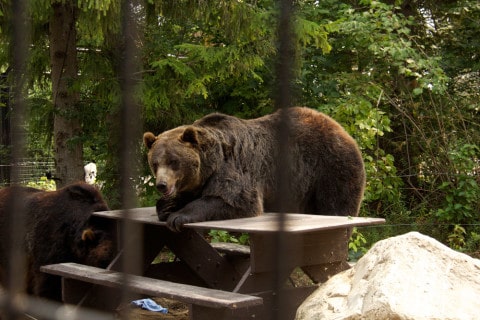BRIDGET MORRISON
The Saskatoon Zoo Society has been working with the Forestry Farm Park and Zoo for 40 years now, and it turns out that their programs have a lot to offer. Despite what you might think, it’s not just for little kids.
Chances are if you were born in Saskatoon, you went to the zoo on a class field trip in grade three or four. Let’s be honest, you probably haven’t been back since. Many people who moved to Saskatoon later in life aren’t even aware we have a zoo, or they imagine it wouldn’t be anything special.
However, this past weekend, I had the chance to go and check out the zoo and interview Katherine Fedoroff, a second-year environmental biology student at the University of Saskatchewan who volunteers there.Fedoroff provided insight into her job as a volunteer, and how it has changed her perception of zoos altogether.
Interestingly, Fedoroff stated that when she was a teenager she was, in fact, anti-zoo. As she began to volunteer, however, she recognized the great work the Saskatoon Zoo Society does to provide an education to the public about the animals and how they offer a safe and respectful space for the animals to live.
“I soon learned the majority of the animals are rescued from the wild, are native to North America and are given another opportunity at life. As well, we are able to educate the public about animal rights and environmental problems,” Fedoroff said.
Many of the rescued animals were harmed due to human impact, such as the two Grizzly bears living at the zoo, Koda and Mistaya. A car hit Koda’s mother, leaving young Koda unable to provide for himself, and Mistaya’s mother abandoned him after their den was run over by a logging truck.
Koda and Mistaya are among the zoo’s top attractions. Fedoroff joked that even some of her friends who she considers least likely to enjoy the zoo love the bears.
“They get pumped when they see Koda take his afternoon dip in his pool,” Fedoroff said.
However, there are many other animals worth checking out, such as the two beautiful Grey wolves, Buddy and Zep. On the exotic side, there are even two Capuchin monkeys named Tarz an and Ma that are definitely worth a visit.
an and Ma that are definitely worth a visit.
Although many people think that the zoo is only for children, there are plenty of opportunities for older people, such as university students, to get involved. Fedoroff spoke about her experience as a volunteer for the zoo.
“I have helped with education, special events, as well as handling animals and showing the animals to the public to either touch, feed or get a better look at,” Fedoroff said.
For Fedoroff, the chance to be with the animals is amazing and the opportunity to educate the public on wildlife and how we, as humans, impact their lives is equally fulfilling.
“The zoo is not just for children and families, but all ages. Whether to continue learning or take a much needed study break, the Saskatoon Zoo is an affordable, exciting place to spend a sunny afternoon,” Fedoroff said.
The zoo is especially affordable during the winter season, from Nov. 1 through April 1, when admission is free. If you bundle up in coats and scarves, you can skip the crowds and cost to experience the animals in a more private setting — plus, many of the North American animals like the lynx and cougar are most active during the winter, so you’re likely to get a unique experience.
The next time you need a break from studying, grab a couple of friends and check out the Saskatoon Forestry Farm Park and Zoo. The chance to see these beautiful and amazing animals up close is an incredibly opportunity — not to mention, a ton of fun!
For more information on volunteering and registering for orientation in May, contact info@saskatoonzoosociety.ca. General information can be found at saskatoonzoosociety.ca.